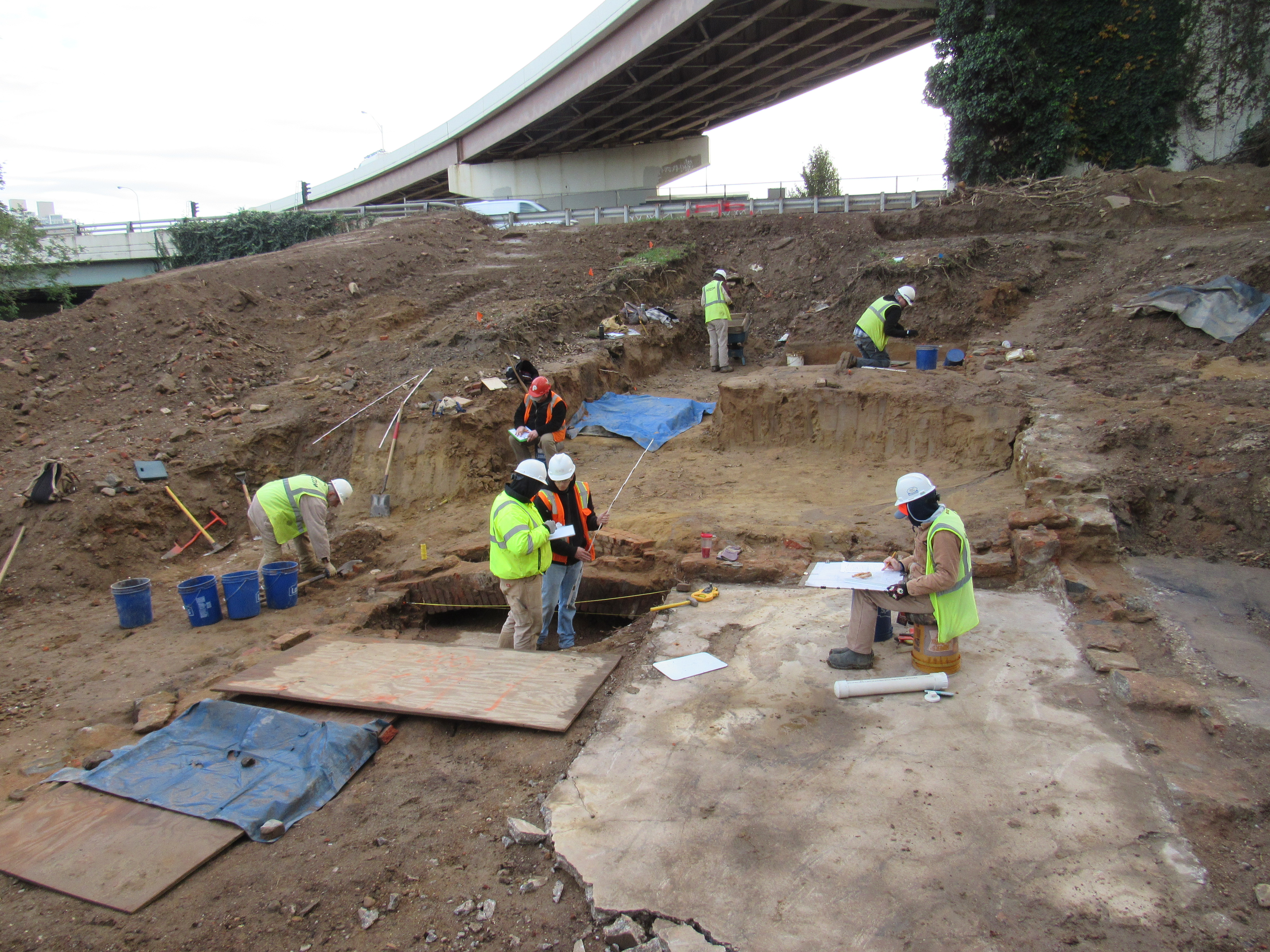The Cohoquenock #1 Site was identified and investigated during the winter of 2017–2018 and was located in an open grassy area at the southeast corner of Second and Callowhill Streets, adjacent to the ramp from the Vine Street Expressway to I-95 North.
| Site Name | Cohoquenock #1 |
| PASS# | 36PH0224 |
| Image | 1 image site overview |
| Dates of Excavation | 2017-2018 |
| Phase of Excavation | Phase I and II |
| Number of Test Units | 13 |
| Approximate Number of Features Identified | 0 |
| Associated Periods | Pre-contact: Archaic |
| Site Acreage | Approximately 0.08 acres |
When Native Americans occupied this site, the location would have been part of the “high bank” that bordered the Delaware River, located a short distance downstream from the confluence with a tributary the Lenape Indians called Cohoquenock (meaning unknown). At the time Philadelphia was founded, this tributary stream was known as Pegg’s Run—named after Daniel Pegg, an early landowner in this vicinity—and formed the effective northern boundary of the new city.
Site artifacts were distributed in a generally low-density scatter of fire-cracked rock (FCR) and stone tool manufacturing debris, recovered from partially impacted ground surface soils (Ap horizon) and underlying subsoil horizons (E/B horizons) that had been preserved in two discontinuous patches of undeveloped backyard areas. These backyard spaces were encountered between 6 and 8 feet above the surrounding streetscape and indicate the extent that this locale was altered during the construction of I-95. Only a few stone tools were found in association with this occupation, including two projectile points (stemmed/corner-notched forms). No pre-contact pottery or intact features were identified at this site.
Based on the general morphology of the heavily resharpened projectile points recovered, it is thought that Cohoquenock #1 was likely originally occupied sometime during the Archaic period. The small size and small artifact assemblage make it difficult to know for certain what activities Native Americans performed at this site. It likely served as a temporary procurement site where important foods and other resources were gathered and processed, and where stone tools were manufactured or refurbished.
